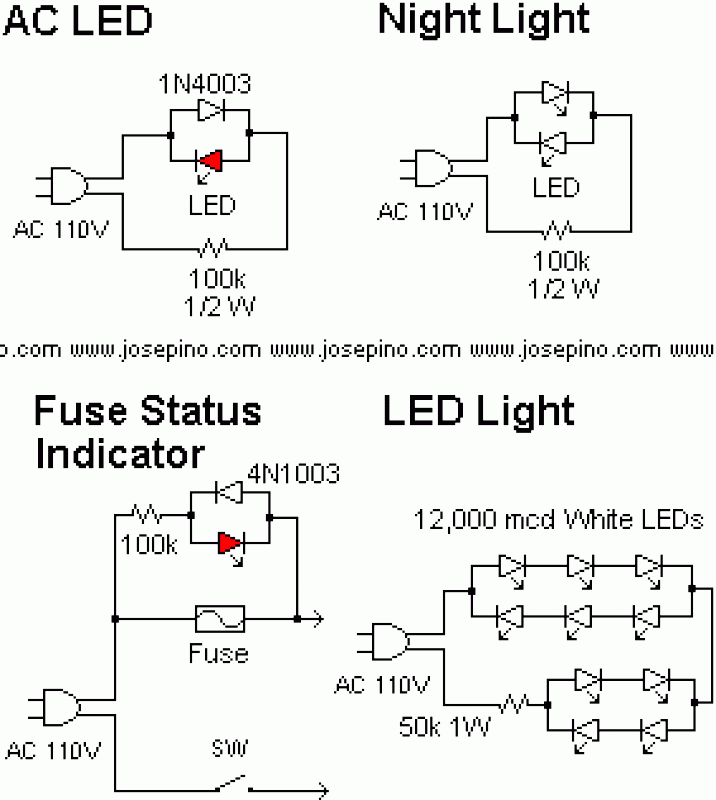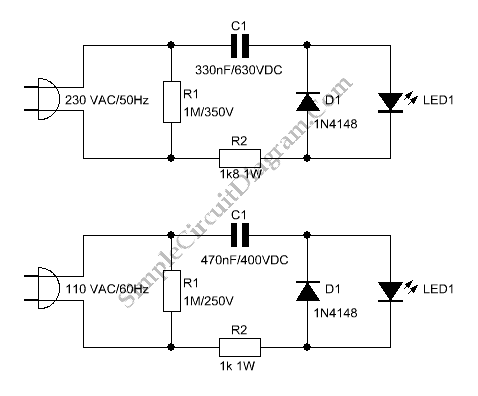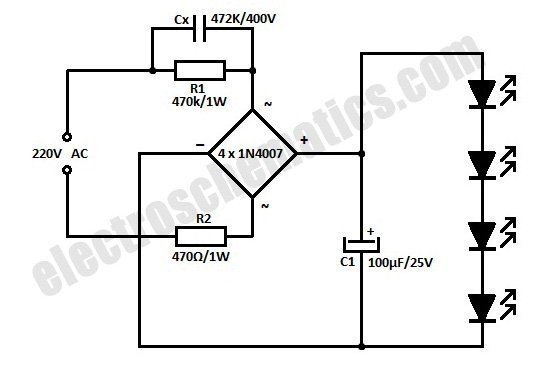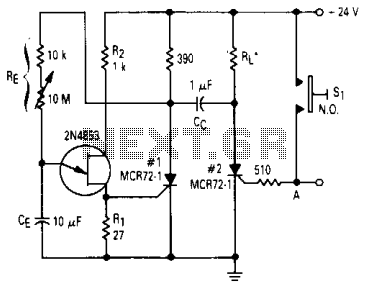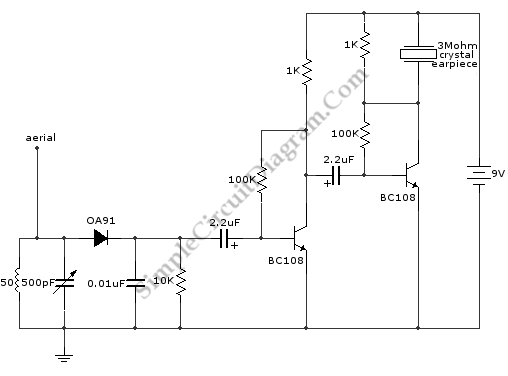
2N2646 Transistor For Flashing LED EGG Timer
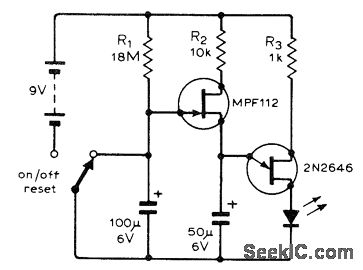
The following circuit illustrates a flashing LED egg timer circuit diagram. This circuit utilizes 2N2646 transistors and features an MPF112 FET.
The flashing LED egg timer circuit operates as a visual timer, providing an indication of elapsed time through the blinking of an LED. The core components of this circuit include the 2N2646 transistors, which serve as the primary switching elements, and the MPF112 FET, which is used for signal amplification and control within the circuit.
The circuit is designed to produce a periodic flashing effect, which can be adjusted based on the resistor and capacitor values used in the timing section. The timing mechanism typically consists of an RC network that charges and discharges, controlling the base current of the 2N2646 transistors. When the capacitor reaches a certain voltage, it triggers the transistor, allowing current to flow through the LED, causing it to illuminate. As the capacitor discharges, the LED extinguishes, creating a flashing effect.
To ensure proper operation, the circuit should be powered with a suitable voltage source, typically in the range of 5V to 15V, depending on the specifications of the components used. The choice of resistors and capacitors will determine the frequency of the LED flashing, which can be tailored for specific applications, such as kitchen timers or alert systems.
In summary, this flashing LED egg timer circuit effectively combines the use of transistors and FET technology to create a reliable and adjustable timing mechanism, making it a versatile solution for various electronic timing applications.The following circuit shows about Flashing LED EGG Timer Circuit Diagram. This circuit using the 2N2646 transistors. Features: MPF112 FET .. 🔗 External reference
The flashing LED egg timer circuit operates as a visual timer, providing an indication of elapsed time through the blinking of an LED. The core components of this circuit include the 2N2646 transistors, which serve as the primary switching elements, and the MPF112 FET, which is used for signal amplification and control within the circuit.
The circuit is designed to produce a periodic flashing effect, which can be adjusted based on the resistor and capacitor values used in the timing section. The timing mechanism typically consists of an RC network that charges and discharges, controlling the base current of the 2N2646 transistors. When the capacitor reaches a certain voltage, it triggers the transistor, allowing current to flow through the LED, causing it to illuminate. As the capacitor discharges, the LED extinguishes, creating a flashing effect.
To ensure proper operation, the circuit should be powered with a suitable voltage source, typically in the range of 5V to 15V, depending on the specifications of the components used. The choice of resistors and capacitors will determine the frequency of the LED flashing, which can be tailored for specific applications, such as kitchen timers or alert systems.
In summary, this flashing LED egg timer circuit effectively combines the use of transistors and FET technology to create a reliable and adjustable timing mechanism, making it a versatile solution for various electronic timing applications.The following circuit shows about Flashing LED EGG Timer Circuit Diagram. This circuit using the 2N2646 transistors. Features: MPF112 FET .. 🔗 External reference
